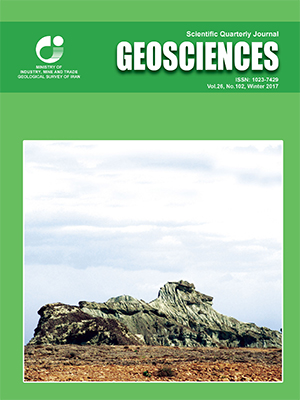Document Type : Original Research Paper
Authors
1 Associate Professor, Department of Geology, Faculty of Earth Science, Kharazmi University, Tehran, Iran
2 Ph.D Student, Department of Geology, Faculty of Science, Ferdowsi University of Mashhad, Mashhad, Iran
Abstract
The Eocene marine deposits in the Chenarbu section in Torbat-e-Jam region (eastern part of Central Iran Zone) have been biostratigraphically studied based on large benthic foraminifera coincide with Shallow Benthic Zones (SBZ) and Calcareous Nannofossils, according to standard worldwide zones (NP). This investigation has been conducted on carbonate sediments with a focus on large benthic foraminifera assemblage such as Eorupertia magna (La Calvaz), Fabiania cassis (Oppenheim), Eoannulariaeoconica (Cole ve Bermudez), Gypsina sp., Textularia sp., Nummulites perforatus (De Montfort) Nummulites sp., Discocyclina sp., Rotalia sp., Acervulina sp., and calcareous nannofossils such as Cribrocentrum reticulatum, Sphenolithus obtusus, Sphenolithus spiniger, Sphenolithus editus, Helicosphaera compacta, Coccolithus pelagicus, Coccolithus eopelagicus, Reticulofenestra sp., Discoaster sp., Discoaster siapanensis, Discoaster barbadiensis. Therefore, based on the determined index species, the SBZ15?- 17 biozones of large benthic foraminifera and the NP16 biozone of calcareous nannofossils in the studied section have been detected which both assign the Late Lutetian- Early Bartonian (Middle Eocene) age for the section.Also, the Lutetian- Bartonian boundary according to index calcareous nannofossil species was separated carefully, and the first appearance of the foraminifera species of N. perforatus (de Montfort) in the middle part of the deposited sequence was recorded during geological time of the Bartonian stage. Therefore, this fact points that in Iran alike western parts of the Tethys basin, the first appearance of N. perforatus (de Montfort) occurred in Early Barthonian (SBZ17). Systematic of Nummulites perforatus (de Montfort) was described based on typological and biometrical characterization.
Keywords

